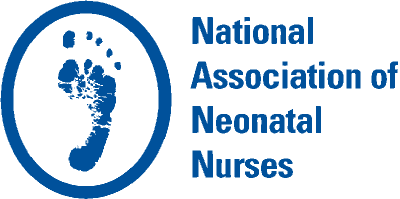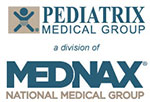Feature
Breastfeeding and Neonatal Abstinence Syndrome: What’s the Evidence?
Gail A. Bagwell, DNP APRN CNS
Neonatal abstinence syndrome (NAS) has become an epidemic in most parts of the United States as a result of the rise in opioid addiction. According to Patrick, Davis, Lehman, and Cooper (2015), in the United States in 2012, the number of babies diagnosed with NAS was approximately 5.8/1,000 births—that’s one baby born every 25 minutes. This increase in NAS has put a strain on well-baby, special, and intensive care nurseries across the United States because these babies can be difficult to care for and require an enormous amount of nursing care hours. Many articles have been written about the care of the NAS patient and breastfeeding the NAS baby; this article will serve to review all of the current evidence on breastfeeding and NAS.
Breastfeeding is the optimal source of nutrition for the neonate. Everything a neonate needs to grow and thrive is readily available from his or her mother’s milk. But what about babies who are diagnosed with NAS; is it safe for them to breastfeed or to receive their mother’s own milk? The American Academy of Pediatrics (AAP) Committee on Drugs (2001), the American College of Obstetricians and Gynecologists (ACOG) Committee on Health Care for Underserved Women and the American Society of Addiction Medicine (2012), and the Academy of Breastfeeding Medicine (ABM, 2009) published position papers encouraging breastfeeding for women in treatment programs, particularly for women who are HIV negative and have strong social support.
Breastfeeding a neonate with NAS is considered to be a nonpharmacologic intervention that can help alleviate the signs of withdrawal. Several published studies have assessed the benefits of breastfeeding on the severity of symptoms, amount of pharmacologic treatment necessary, and length of stay for babies diagnosed with NAS. The studies found that breastfeeding decreases the signs of withdrawal, the amount of pharmacologic treatment required, and the length of stay in the hospital for babies diagnosed with NAS, as well as increases maternal attachment and compliance to a drug treatment program (Abdel-Latif et al., 2006; McQueen, Murphy-Oikonen, Gerlach, & Montelpare, 2011; Pritham, Paul, & Hayes, 2012; Wachman, Byun, & Philipp, 2013; Welle-Strand et al., 2013). However, breastfeeding rates are low among women in treatment programs who have had babies.
The reasons for not allowing an infant to breastfeed were multifactorial and varied from maternal issues and healthcare providers’ fear of large amounts of the treatment drug crossing into the breast milk to a lack of trust that mothers, even those in treatment programs, wouldn’t abuse other drugs and mothers not always being available to breastfeed their infant (Jansson, Velez, & Harrow, 2004). However, studies have shown that for women in treatment programs, the amount of methadone or buprenorphine that crosses into breast milk is minimal (Ilett et al., 2012; Jansson, Choo, Velez, Lowe, & Huestis, 2008). In a retrospective chart review of mothers who were in a methadone treatment program, the authors found that of the 68% of women who qualified for breastfeeding, only 24% actually breastfed their infants to some extent during hospitalization and 60% of those women discontinued breastfeeding on average at 5.88 days (Wachman et al., 2010). Other studies have looked at the reasons for the low breastfeeding rates among women in treatment programs and found that there was 1) a lack of clear, concise guidelines for breastfeeding mothers; 2) inconsistent advice from healthcare providers; 3) infant feeding issues related to withdrawal; 4) often separation of the mother from the baby as a result of hospitalization; 5) issues with the mother’s low self-esteem, lack of knowledge, and feelings of guilt; and 6) inadequate support from the healthcare provider (Jannson et al., 2010; McQueen et al., 2011).
The advantages of breastfeeding drive the AAP, ABM, and ACOG recommendations to encourage breastfeeding by women in treatment programs who are HIV negative. As neonatal nurses, we are in the unique position to help encourage beneficial breastfeeding behaviors by providing support to the mothers of our NAS babies who desire to breastfeed. All neonatal nurses need to be educated regarding the pharmacokinetics of drugs in breast milk, breastfeeding techniques, and non-judgmental care. This education is essential to caring for neonates diagnosed with NAS and their mothers, especially if we want to increase the number of babies with NAS who are breastfed.
References
Academy of Breastfeeding Medicine. (2008). Position statement on breastfeeding. Breastfeeding Medicine, 3(4), 267–270.
Abdel-Latif, M. E., Pinner, J., Clews, S., Cook, F., Liu, K., & Oei, J. (2006). Effects of breast milk on the severity and outcome of neonatal abstinence syndrome among infants of drug-dependent mothers. Pediatrics, 121, 106–114.
American Academy of Pediatrics Committee on Drugs. (2001). The transfer of drugs and other chemicals in human milk. Pediatrics,108(3), 776–789.
ACOG Committee on Health Care for Underserved Women, & American Society of Addiction Medicine. (2012). Opioid abuse, dependence, and addiction in pregnancy. Obstetrics and Gynecology, 119(5), 1070–1076.
Ilett, K. F., Hackett, P, Gower, S., Doherty, D., Hamilton, D., & Bartu, A. E. (2012). Estimated dose exposure of the neonate to buprenorphine and its metabolite norbuprenorphine via breast milk during maternal buprenorphine substitute treatment. Breastfeeding Medicine, 7, 269–274.
Jansonn, L. M., Velez, M., & Harrow, C. (2004). Methadone maintenance and lactation: A review of the literature and current management guidelines. Journal of Human Lactation, 20(1), 62–70.
Jansson, L. M., Choo, R., Velez, M. L., Lowe, R., & Huestis, M. A. (2008). Methadone maintenance and long-term lactation. Breastfeeding Medicine, 3(1), 34–37.
McQueen, K. A., Murphy-Oikonen, J., Gerlach, K., & Montelpare, W. (2011). The impact of infant feeding method on neonatal abstinence scores of methadone-exposed infants. Advances in Neonatal Nursing, 11(4), 282–290.
Patrick, S. W., Davis, M. M., Lehman, C. U., & Cooper, W. O. (2015). Increasing incidence and geographic distribution of neonatal abstinence syndrome: United States 2009 to 2012. Journal of Perinatology, 35(8), 650–655. doi:10.1038/jp.2015.36
Pritham, U. A., Paul, J. A., & Hayes, M. J. (2012). Opioid dependency in pregnancy and length of stay for neonatal abstinence syndrome. Journal of Obstetrics, Gynecology, and Neonatal Nursing, 41(2), 180–190.
Wachman, E. M., Byun, J., & Philipp, B. L. (2010). Breastfeeding rates among mothers of infants with neonatal abstinence syndrome. Breastfeeding Medicine, 5(4), 159–164.
Welle-Strand, G. K., Skurtveit, S., Jansson, L. M., Bakstad, B., Bjarko, L., & Ravndal, E. (2013). Breastfeeding reduces the need for withdrawal treatment in opioid-exposed infants. Acta Paediatrica, 102(11), 1060–1066.


